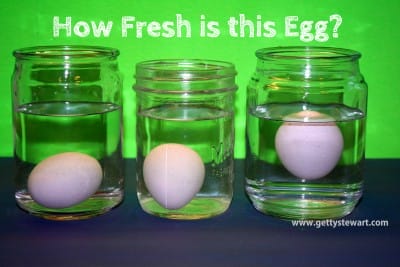Egg Facts – Top 10 FAQs About Eggs
Here are 10 egg facts based on questions I am often asked at workshops. I love getting questions like these and digging a little deeper to better understand more about our food. Some of these egg facts require a little more explanation, so they got their own posts, others are included in this list of Top 10 FAQs about Eggs. Enjoy and be sure to share your eggsellent knowledge with your friends!
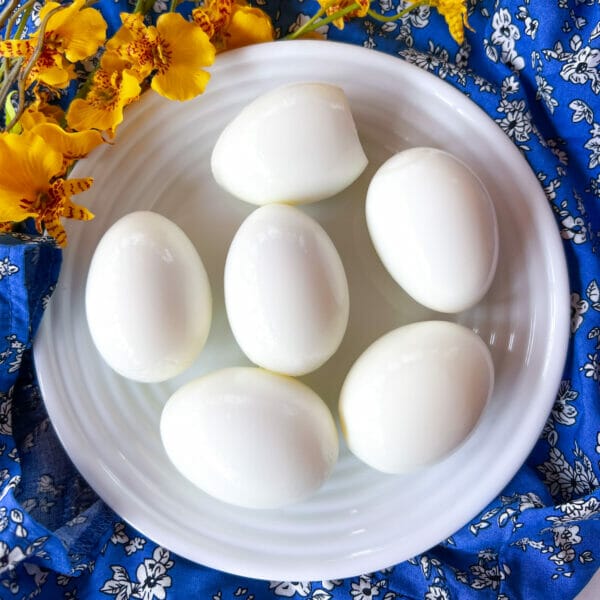
Read more: Easy Peel Boiled Eggs, Leftover Egg Ideas, Dilly Egg Salad Recipe, Ham, Egg & Cheese Muffins.
Top 10 Egg Facts You Need to Know
1. Are Eggs Good For You?
Yes! Eggs are an excellent, inexpensive source of high quality protein and nutrients such as Vitamin B12, riboflavin, Vitamin D, folacin and choline. Eggs also have some iron, although it may not be absorbed as readily by the body than other sources of iron (eating eggs with foods high in Vitamin C like citrus fruits, peaches, papayas, sweet red peppers, berries, broccoli, and peas can help absorption of iron). The nutrient content chart is from the Manitoba Egg Farmers which also provides further information on the benefits of key nutrients.

The nutrients of eggs are not equally distributed between the egg whites and egg yolks. While egg whites offer the highest concentration of protein and some B vitamins, most of the nutrients and minerals are found in highest concentration in the egg yolks. Your best bet is to eat the whole egg!
And yes, eggs are a healthy choice for everyone, unless your Doctor has specifically said differently. Although eggs contain some cholesterol, the amount of saturated fat we eat has more of an effect on the amount of cholesterol in our blood than the cholesterol we get from eating eggs. So go ahead eat an egg a day – just not with bacon every time! The American Heart Association recommends one egg (or two egg whites) per day for people who eat them, as part of a healthy diet.
2. Are brown eggs or organic eggs more nutritious?
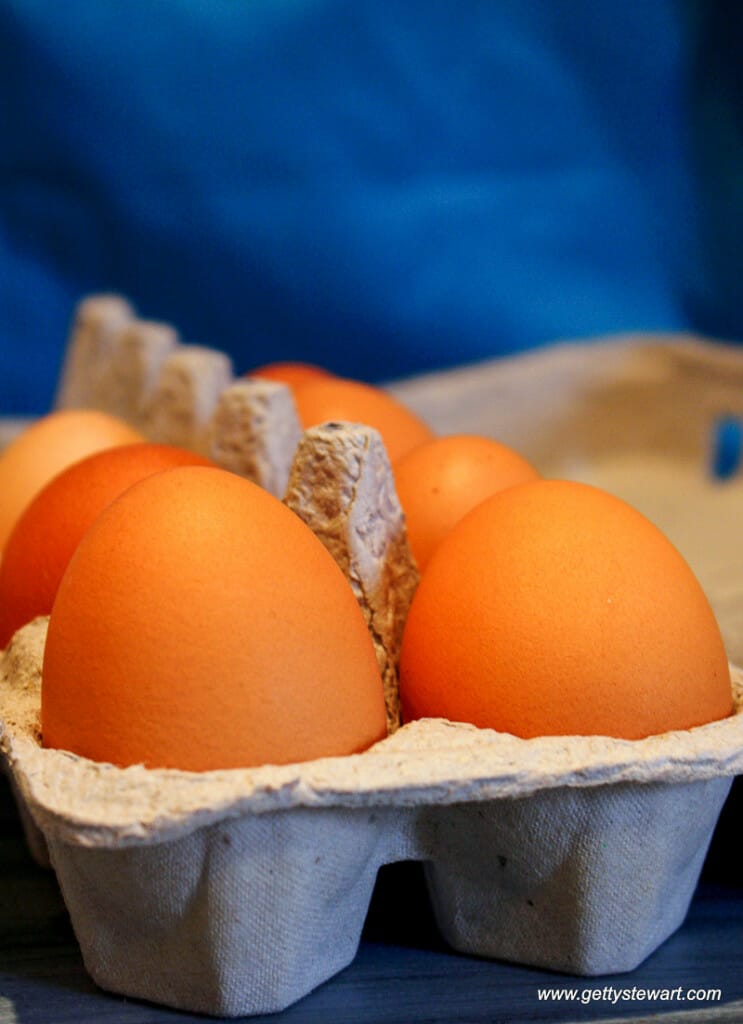
No. Shell color, size or how hens are raised does not change the nutrient content of eggs. So a brown egg is no more nutritious than a white egg.
What hens eat, however, does impact the nutrient content of eggs. For example Omega 3 eggs are from hens fed a diet high in flax seed. Eggs labelled – “Vitamin Enhanced” are from hens fed specific diets rich in particular vitamins. Here’s Manitoba Agriculture’s recommended feeding regime for egg farmers wanting to increase the Omega 3 content of their hens’ eggs.
The color of the yolk is also impacted by a hen’s diet. A diet high in corn, alfalfa or other greens high in carotenoids will produce more golden yolks. To control yolk color commercial producers may add supplemental carotenoids such as canthaxananthin or marigold to the feed to produce deeper colored yolks. In Canada, there are no labeling requirements regarding these practices and darker yolks do not automatically mean more nutritious yolks.
My sister has laying hens that produce just enough eggs for her family. Her hens are free to roam the entire farm yard eating whatever is available (grass, weeds, flowers, worms, grubs or insects). This means the nutrient content of her hen’s eggs and their yolk color changes with the seasons. All super nutritious.
As you can imagine, commercial egg farms need to know more about what their hens eat so they can meet the demands of consumers and ensure all safety standards are met.
Did you know…
- Free Run means hens are kept loose in a barn without access to outdoors/
- Free Range means hens are kept loose in a barn with access to outdoors (weather dependent). Read more about Free-Range and Free Run Chickens.
3. How long do eggs last – what’s the shelf life?
- Raw eggs: 30 days or 3-4 weeks past best before date
- Cooked eggs in shell: 7 days
- Peeled cooked eggs out of shell (no other ingredients): 7 days
- Scrambled, deviled, frittata, quiche, omlette, etc: 3-4 days in fridge

It takes 4-7 days for eggs to hit the store shelf from when they’re laid. According to the Egg Farmers of Alberta the Best Before date on the package adds 28 to 42 days from the packaging date. This date indicates the length of time the eggs will maintain their Grade A quality.
An egg can still be used after the Best Before date, but should be cooked thoroughly (use in baking). It is unclear exactly how long after the best before date an egg can still be used, it’s best to crack it open in a separate bowl just in case. But 30 days is a pretty long shelf life – consider buying fewer eggs at a time if you find yourself in this predicament often. The Eat By Date website says fresh eggs stored properly in the fridge will last an additional 3-4 weeks past the Best Before date.
4. Why should we store our eggs in the refrigerator when people in other countries don’t?
Different countries have different approaches for controlling salmonella in or on eggs. Egg production practices, egg washing and hen vaccinations are are just some of the differences. For example, in North America, eggs are washed while in Europe they are not washed prior to packing. The EU requires salmonella vaccination for all hens, in North America this vaccination is voluntary. These differences lead to the differences in recommendations for how to safely store eggs at home.
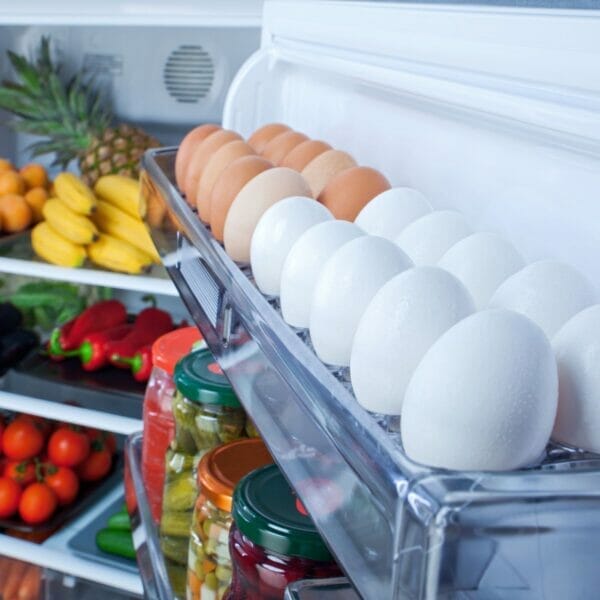
In North America, if you buy eggs from the grocer, it is highly recommended you store eggs in the fridge to reduce the risk of salmonella poisoning (Centre for Disease Control). Eggs that have been refrigerated, should not be stored at room temperature.
For optimum freshness, store eggs in their original carton in the main part of the fridge, not in the fridge door or in the egg caddies.
5. What came first, the chicken or the egg?
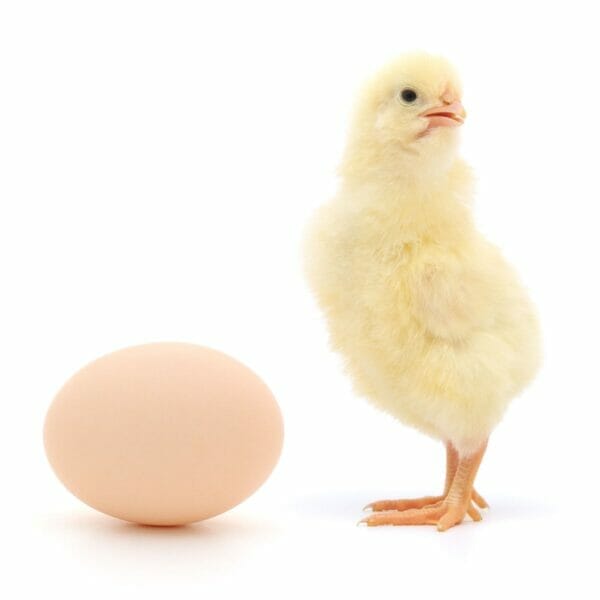
The chicken came first. British researchers confirmed the formation of eggs is only possible due to a protein found only in chicken ovaries. The only mystery remaining is where did the first chicken come from? Many are speculating it came from the other side of the road!
6. How can you tell if a raw egg is fresh?
Here are a couple of ways to test if an egg is fresh or old.
Water Float Test
Eggs are porous. As they age, oxygen enters the egg causing the air sac on the wide end of the egg to get bigger. Placing eggs in a jar of water will give some indication of how big the air sac is.
Fresh eggs – air sac is small and eggs lie horizontally along the bottom of the jar.
2-3 week old egg – air sac is growing and egg starting to balance on the pointy side.
Old eggs – air sac has grown to the point where egg will float. This egg is about 4 weeks old. To be certain it’s still good to eat, crack it open in a separate bowl rather than cracking it into your dish. In all likelihood, it’s still great for baking. Obviously, if it looks or smells bad, toss it.
The Cracked Egg Test
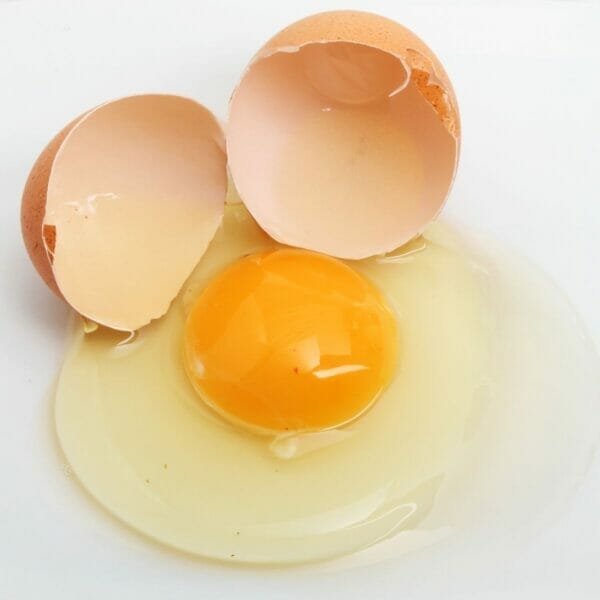
Crack an egg on a flat plate and observe the yolk and the thick egg white immediately surrounding the yolk (there are two parts to the egg white – the thin egg white and the thick egg white). If the egg yolk is nicely centered in the thick egg white which has a definite shape and has some height (as in the photo above), you have a high quality, fresh egg. As the egg ages, the thick egg white will become runnier and will become flatter. It’s still good to eat, it just won’t look as pretty if you’re serving sunny side up fried eggs.
Extra fun fact – fresh eggs are best for poached eggs and older eggs are best for easy to peel hard boiled eggs.
7. What is that green ring around egg yolks when they’re hard boiled?
That’s a sign of an overcooked egg. High, prolonged heat causes the sulfur from the egg white and the iron from the
yolk to have a reaction which forms a grayish green ring around the yolk. It is harmless and perfectly safe to eat, but not very attractive.

Read my post on How to Make Perfect, Easy to Peel Hard Cooked Eggs for more details on how to avoid the green ring and produce lovely hard cooked eggs that are easy to peel.
Can you hard cook eggs in the oven? I wasn’t impressed with the results when I tried it, as I share in my article on Hard Cooked Eggs in the Oven: Not All They’re Cracked Up to Be.
But do cook eggs in an Instant Pot. Results are fantastic and easy to peel!
8. What is a double yolk?
The formation of an egg is a pretty spectacular process and may take a young hen a little time to get perfect. A double (or more) yolk occurs most frequently in young hens who are just starting their egg laying, or in old hens who are just finishing their egg laying. As their systems adjust, they may release more than one yolk at a time, which get encased in the same egg white and egg shell. If these yolks were fertilized, they may indeed turn into twin chicks. Double yolks are said to bring good luck. Enjoy and count yourself lucky!
9. Do blood spots mean an egg was fertilized?
Blood spots can occur in any type of eggs – fertilized or not. They are perfectly harmless and are not a sign that an egg has been fertilized. They occur if there is a small ruptured blood vessel in the hen as the egg was being formed. Blood spots are usually detected when they’re graded and candled, however, they may be difficult to see, especially in brown shelled eggs. It is okay to use these eggs. You can remove the blood spots if you wish, but it’s not necessary.
Roosters are not part of commercial egg production, so you’ll never get a fertilized egg from grocery store eggs. If you’re getting eggs from a small farm where the roosters are strutting their stuff, it’s very likely you’ll get a fertilized egg. However, because farmers collect eggs daily and hens do not brood, the growth process is halted very early with no tell tale signs. These eggs are safe to eat and you won’t notice a difference.
10. What’s the best way to peel eggs?
Here are several tips for getting easy to peel eggs:
- Use eggs that are over 1 week old, as eggs age they become easier to peel. The egg white is easier to remove from the shell due to more air entering the egg and reduced acidity.
- Hard cook eggs – don’t overcook or boil them.
- Immediately after draining hot water, shock them in cold water with ice cubes for 10 minutes.
- Gently crack the eggs to give them hairline cracks as they’re cooling in the ice water. A little water will get in between the membrane and the peel making them easier to peel.
- Tap the egg gently all over the shell to get many little pieces. Tap gently to avoid piercing the egg white with the shell pieces.
- Once you have tapped the egg all on every side, use your palm to gently roll the egg between your hand and a table or counter top. You should begin to feel the shell and egg white separating slightly.
- Start peeling from the wide end where the air bubble is. Once you have a good start, the egg should be fairly easy to peel.
- If additional help is needed, peel the egg under running water, letting the flow of the water help separate the egg from the shell.
Video: How to Make Easy-Peel Cooked Eggs
We just had to try it! Given the amount of effort and how much mouth contact was involved – we decided it was a fun, one time experiment. We have not used this technique since!
11. What size egg do I use?
The standard for recipes are large eggs. In case you don’t have the right size here are some egg conversions for you:
Egg Conversions Based on Large Eggs
Whole Eggs
3 whole eggs = 1/2 cup
1 whole egg = 3 tablespoons
1/2 whole egg = 4 teaspoons
Yolks
6 to 7 egg yolks = 1/2 cup
1 egg yolk = 1 tablespoon
Whites
4 to 6 egg whites = 1/2 cup
1 egg white = 2 tablespoons
Dried or Powdered Eggs
1 egg = 2 tablespoons egg powder + 2 tablespoons warm water
Liquid Egg Substitute
1 egg = 1/4 cup egg substitute
2 eggs = 1/2 cup egg substitute
4 eggs = 1 cup egg substitute
Special thanks to the Canadian Home Economics Foundation for their support in helping me share ideas for making home cooking easy and enjoyable! The depth of research that went into this post, wouldn’t be possible without their support.
More egg tips and recipes
Select, store and serve seasonal food for everyday cooking with Getty. Getty is a food educator and Professional Home Economist, who loves sharing tips and recipes following the seasons from her Canadian kitchen. Sign up to get seasonal tips and recipes delivered to your inbox. Learn more about Getty or check out her books and pdf guides.



